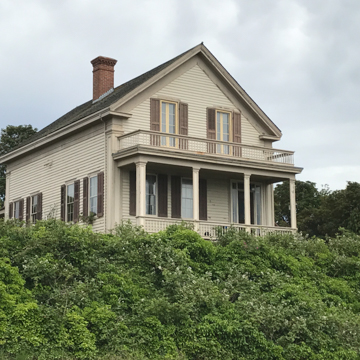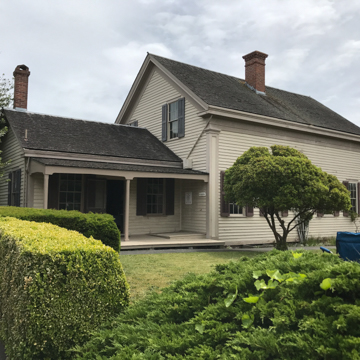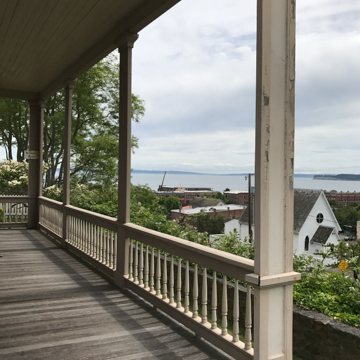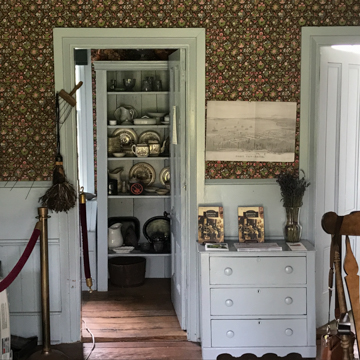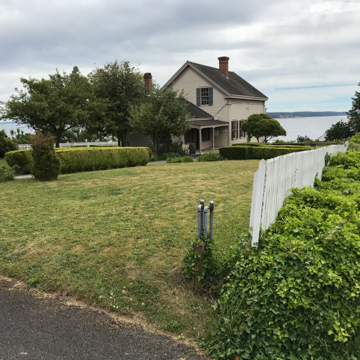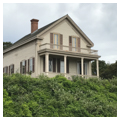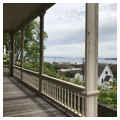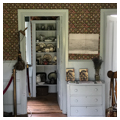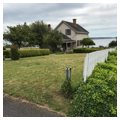You are here
Rothschild Historic House Museum
Home to one of the earliest merchants in Port Townsend, the Rothschild House represents the early settlement history of the city—before the emergence of the extravagant “Victorian” showpieces for which the city has become famous.
Sitting atop a bluff with a view of the bay, the Rothschild House is a relatively simple Greek Revival structure with a front gable and may have been built following standard house plans, common to New England, that were brought to Port Townsend by early settlers. Indeed, many similar, pre-cut Greek Revival houses were shipped from New England, around Cape Horn, to early coastal towns in the West. The Rothschild House is a one-and-a-half-story structure, with a single-story kitchen wing added to the rear. The exterior features a front-facing steep gable, horizontal clapboard siding, six-over-six double-hung rectangular windows, and an open veranda. The back wing also has an open porch, and shutters have been added to the window surrounds. The original doors and woodwork are made of Douglas fir, hand-grained with a blonde finish to resemble oak. The wood and sandstone used for the foundation are native to the area.
The house is named for David C. H. Rothschild, who emigrated from Germany to seek his fortune in the 1849 California Gold Rush. After owning mercantile stores in California’s Gold Country and Bellingham, Washington, Rothschild set out for China and the East Indies, for reasons unknown. Upon returning to the United States, he settled in Port Townsend and opened the Kentucky Store (later named Rothschild and Co. Mercantile), selling general goods in 1858. Following Rothschild’s death in 1886, his sons took over the business and moved the store to Seattle. Today, there is only a remnant left of the original store in Port Townsend’s Water Street commercial district.
The house, which sits on a half-acre of land and features a heavy stone foundation, is believed to have been built in 1868 by A. Horace Tucker, a native of New Hampshire who himself had come to Port Townsend via the gold fields of California. The eight-room house would eventually be home to five Rothschild children, including the youngest daughter, Emilie, who became the town’s first librarian and lived in the home for 78 years until her death in 1954, apparently maintaining the interior as closely as possible to when her parents were alive. The estate was passed down to the last living family member, the youngest son Eugene, and in 1959 he donated it to the state. In 1962 it opened as a historic house museum owned and maintained by Washington State Parks and operated by the Jefferson County Historical Society.
Because only one family owned the property, remarkably little restoration was needed when ownership changed hands. The house was updated with modern amenities such as electricity, heat, and running water, but a majority of the home was left untouched by Emilie Rothschild, and, as a house museum today, still attempts to convey an image of mercantile family life in the late-nineteenth-century Pacific Northwest. Many of the original furnishings, kitchen appliances, woodwork, and wallpaper are all viewable to the public, and clothes made by the Rothschild women still hang in dressers.
Writing Credits
If SAH Archipedia has been useful to you, please consider supporting it.
SAH Archipedia tells the story of the United States through its buildings, landscapes, and cities. This freely available resource empowers the public with authoritative knowledge that deepens their understanding and appreciation of the built environment. But the Society of Architectural Historians, which created SAH Archipedia with University of Virginia Press, needs your support to maintain the high-caliber research, writing, photography, cartography, editing, design, and programming that make SAH Archipedia a trusted online resource available to all who value the history of place, heritage tourism, and learning.














